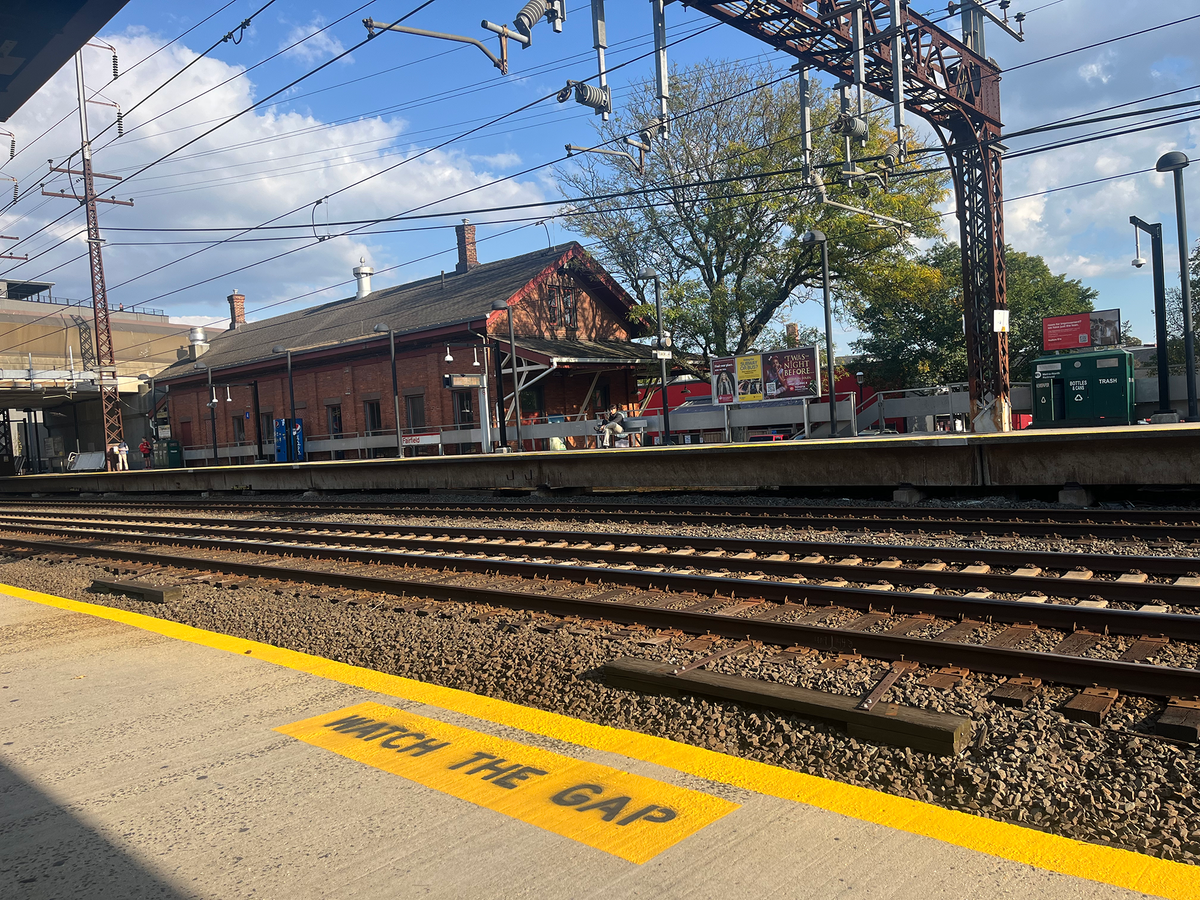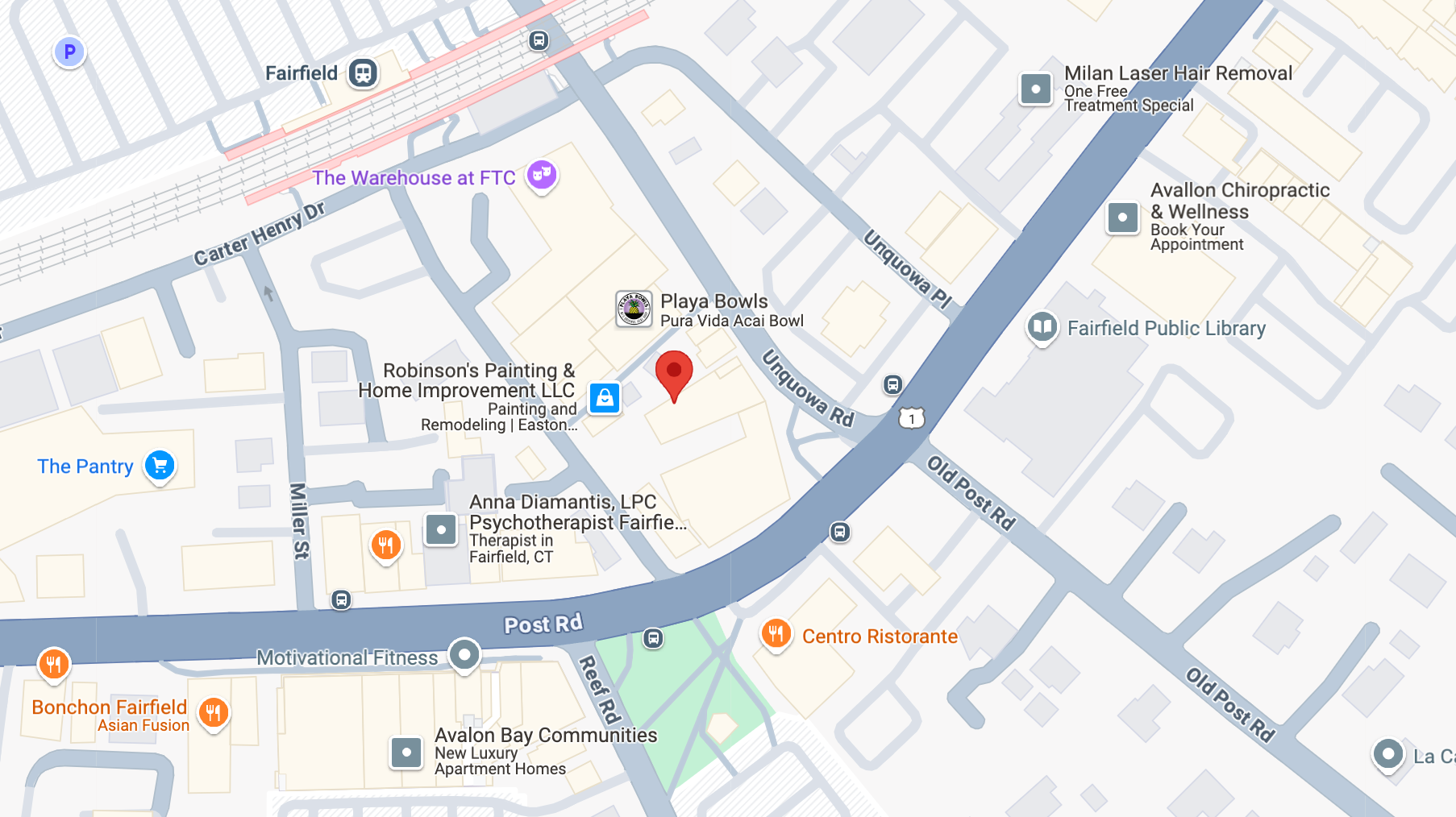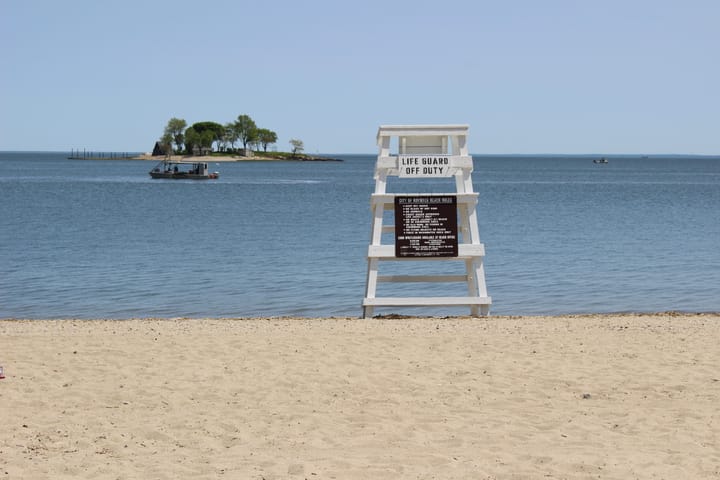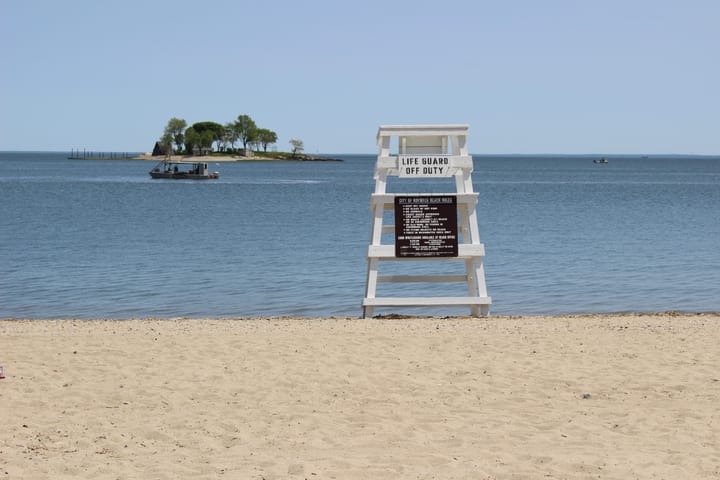All Aboard: In and Around the Fairfield Station
In the latest piece in our All Aboard series, we take you in and around the Fairfield station.

The Fairfield Train Station is located in the heart of downtown. It’s surrounded by about 40 restaurants, arts and cultural spaces, such as the Fairfield Theatre Company, and major institutions, like town hall. It’s just over a mile from one of the town’s most popular beaches, Penfield, and about a mile and a half from Fairfield University.
A 2019 Fairfield Transit Oriented Development plan described the downtown as “attractive and walkable with a plethora of restaurants, entertainment, shops and services. The downtown also contains several schools, government offices, and arts and cultural anchors.”
Pre-COVID, more than 2,000 riders accessed Fairfield station each day, particularly commuting during the peak hours but also on Saturdays for trips into NYC. The plan noted that it was “one of the busiest stations on the Metro North New Haven line,” with 1,100 surface parking spaces, and “single-family neighborhoods are within easy walking distance to the station.”
It’s the busiest of three train stations in the town, alongside Southport and the newly renamed Fairfield–Black Rock. Service to the Southport station is much more limited than the other two.
Though the area surrounding the station is largely built out, there are a few hotly debated proposals to bring more development to the area.
Let’s take a look at the current area and what debates are taking place around potential development.
A Look at the Fairfield Station
The two old station buildings are listed on the National Register of Historic Places. Currently, they are repurposed for other uses, including serving as the home to the Nauti Dolphin Pizzeria.
The buildings were added to the register in 1989. In its application, the town said they were “significant as reminders of the important role of railroad passenger service in the historical development of Fairfield.”
The application noted that the town was previously an “agricultural and maritime community,” which experienced “substantial commercial and industrial development as a direct result of its rail connections.”
The station helped to establish the nearby area as the “commercial focus of the town.”
Around the Fairfield Station
That commercial focus has carried through today, as the Fairfield station area “is part of a mature and well-loved downtown,” according to a 2019 Fairfield Transit Oriented Development plan. The plan, which highlighted recommendations for both Fairfield and Fairfield–Black Rock stations, noted that the area around Fairfield is also relatively built up.
“Downtown lacks significant sites within an easy walking radius of the station for large-scale development,” the plan stated. Its recommendations noted that “small-scale infill development will support the continued vitality of Fairfield’s beloved downtown shopping and dining district.”
As we’ve covered in our All Aboard piece on Fairfield–Black Rock, the town is focusing most of its transit-oriented development efforts around that station, which has more vacant space available for building.
“At Fairfield Metro [now Fairfield–Black Rock], transit-oriented development could transform the station area into a mixed-use neighborhood,” the study noted. “Walkable multifamily residential and mixed-use development can create a cohesive, distinctive district that enhances the Town’s tax base.”
Controversial Development Nearby
As part of the community engagement sessions for the plan, “Fairfield community members wanted to ensure that any changes helped improve the station area’s already-prized walkable character and preserved the modest scale of downtown buildings.”
But that doesn’t mean some developers aren’t looking to build near the station.
A proposed plan to build a six-story, 63-unit apartment complex at 15 Unquowa Road has been mired in court for the past few years. In 2022, the town’s Plan and Zoning Commission unanimously denied the application, which called for a six-story structure and 30% of the housing units to be listed as affordable. As a part of the application, the developer also submitted a zoning text amendment that would have allowed affordable, multifamily developments to be built in the downtown area without ground floor business or commercial uses attached to them.

The proposal was filed under the state’s 8-30g statute. This statute requires that each municipality must have at least 10% of its housing stock qualify as affordable housing. When a city or town doesn’t meet that threshold, developers looking to build projects can appeal to the state to override local zoning regulations for their developments—so long as at least 30% of the units in their proposal are affordable. Because of this, it limits the ability of local planning and zoning commissions can deny applications.
In its denial, the Fairfield Plan and Zoning commission noted that the regulation changes the applicant proposed would “cause irreversible permanent economic and social damage to the town, eliminating commercial uses, destroying the very attributes that attract people to our downtown.”
The commission also noted the project, which is located on a site that is just under half an acre, would bring “unprecedented density compared to any other Transit Oriented Developments or 8-30g affordable housing applications” in the town.
The commission denied the application for three main reasons—the project’s impact on the local sewer system, on drainage, and on traffic and parking.
But the developer appealed the town’s decision, stating that the commission "fails to identify and quantify a harm to substantial public interest in the health, safety, or other matters that the Commission may legally consider, which clearly outweighs the need for affordable housing, as required by Section 8-30g.”
In August 2024, Judge Stephen Frazzini sided with the developer. In his verdict, Frazzini wrote that the developer’s “appeal is sustained.” He required a few conditions including additional soil testing and new architectural drawings showing access ramps and driveways to the site without an unobstructed view,” but said that if those were met the “court will issue its final order that both applications be granted in full and without condition.”
In response, the town filed its own appeal in September against Frazzini’s decision. Town Attorney James Baldwin noted that the Water Pollution Control Authority’s denial of a sewer application “should have been the end of the discussion,” as that is a valid reason to deny a proposed development.
He also highlighted the impact that eliminating commercial uses would have on the town. Baldwin wrote that the project would “permanently degrade the very hub and heart of the downtown area; Fairfield's downtown is a key economic driver and regional destination for dining, entertainment and shopping, contributing 22% of the Town's property tax revenues.”
He added that this application would also “permanently displace 5-6 local businesses,” and that it would “create issues of pedestrian and vehicular safety that would be ‘devastating’ to downtown.”
The developer 15 Unquowa Road LLC filed its own response to the appeal in October, arguing that it should “be allowed to proceed with providing the citizens of Fairfield with much needed affordable housing.”
The future of the property remains up in the air as the court reviews the appeal.
Future Development in the Area
One potential future site that could be developed is the former Exide Battery site along Post Road, that’s just under a mile from the station.
The 2019 Fairfield Transit Oriented Development study noted that the 6.25 acre site “is considered a potential western gateway to Downtown Fairfield.”
In October, the Town Plan and Zoning Commission voted to deny a proposal that would have brought a Porsche dealership to the site, stating that the application’s “location, type, character, and size of the use and building is not in harmony with or conform to the appropriate and orderly development the Town and neighborhood and would hinder or discourage appropriate development and use of adjacent property and impair its value.”
In the TOD study, officials wrote that while the site is “not in the core of downtown,” it is “a good retail location because it is on Post Road between Fairfield and Southport/Westport,” and would “likely be part of a mixed-use development.”



